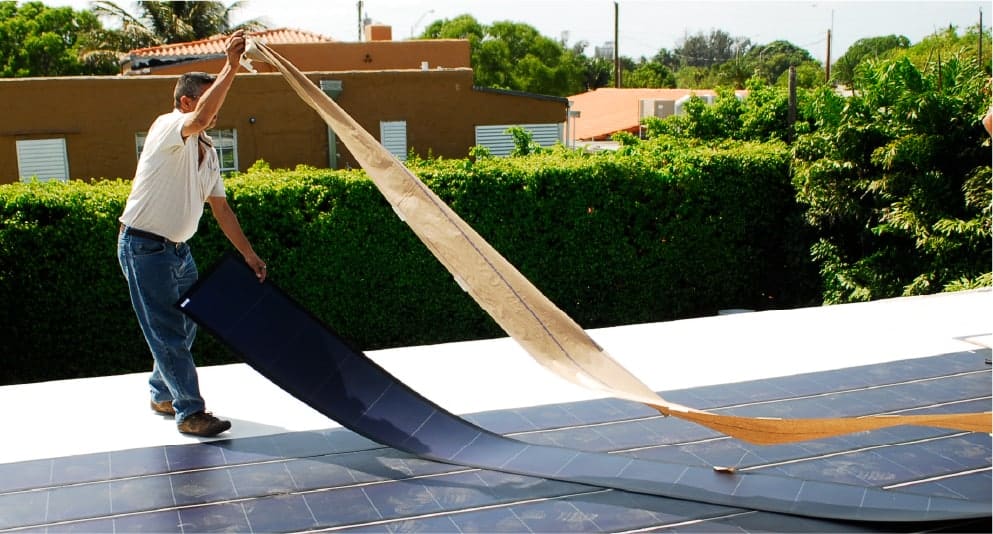An Introduction To Thin-Film Solar Cells
Last updated: 26 Dec 2023
In efforts to improve the efficiency of solar cells, innovative start-ups worldwide work hard on devising solar solutions that promote high sustainability, be it through recycling, using alternate materials to substitute toxic materials in solar cells or minimising resource utilization.
Perhaps one of the most useful innovations in solar cell technology is the emergence of flexible solar generating materials known as thin-film solar cells, which are well known for their cost-effective nature, minimal usage of materials in the process of fulfilling application requirements and an optimistic increase of efficiency when compared to solar cells made up of silicon wafers.

Thin-film solar cells are solar films that can be ‘printed’ in rolls like wallpaper. They are ultra-lightweight, weighing about 65% less than traditional solar panels, but are 10% more efficient. When it comes to the installation of these solar cells, the solar films can be rolled out and mounted to almost any surface – sometimes with little more hardware than some double-sided tape. Considering its lightness, low cost, and ease of installation, they become a great solar solution and open more opportunities for placement in rural areas where energy is in desperate demand.
Besides, thin-film solar cells are also a type of building-integrated photovoltaics (BIPV), which means they can be seamlessly integrated into building architecture in the form of roofs, canopies, curtain walls, facades, and skylight systems. BIPV technology provides the following benefits:
- Increased energy efficiency
- High thermal insulation
- High sound insulation
- Decreased O&M costs
- Zero carbon footprint
In addition, another benefit of BIPV solar panel systems is that they enable homeowners to save on building materials and electric power costs. By substituting BIPV for standard building materials, you can save on the additional cost of solar panel mounting systems since the solar cells are not only installed as building materials, allowing natural light inside just as conventional architectural glasses, but they also act as an energy-generating device.
